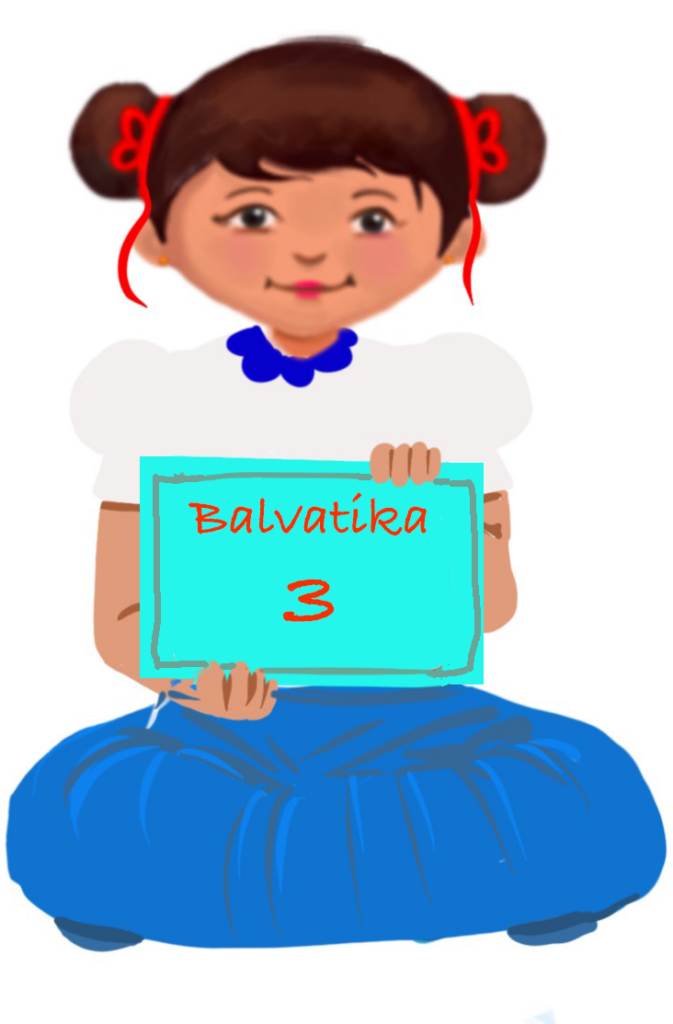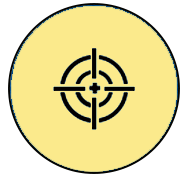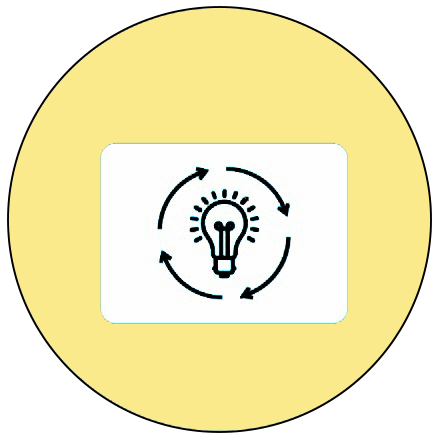
Comparing Objects
Week 1 – More or Less
Learning Outcome
Compares two numbers up to 9 and uses vocabulary like more than, less than, equal.
 Objective
Objective
Children will be able to compare objects using the terms more, less and equal.
 Prerequisites
Prerequisites
● Numbers from 1 to 10
● The teacher can have a simple check at the beginning of the lesson by asking the children to say the number through flashcards or objects available in the class.
 Pre-Teach Vocabulary
Pre-Teach Vocabulary
Numbers 1 to 10
Introduction
The teacher may start with a revision of numbers by showing a few objects/flashcards followed by a song to introduce the topic of more and less.
Song: Yummy Dosai
Dosai yummy dosai,
We are making dosai.
With Urad dal and rice,
We make them round and nice.
My father eats four,
As, he is big and wants more.
My brother eats three,
As, he is bigger than me.
I eat two and my baby sister eats one.
Wow making yummy dosai is so much fun.
 Notes to the teacher: The same song could be used for role play.
Notes to the teacher: The same song could be used for role play.
Video: Yummy dosai
ISL Video: Yummy dosai
The teacher can also introduce the word more, less, and equal through body parts.
● We all have two eyes and ten fingers. Our fingers are more than eyes in number.
● We have ten fingers and ten toes; they are equal in number in us.
● We have two eyes and two ears; they are equal in number in us.
The teacher could use any available material to introduce comparing the objects using the terms more, less, and equal.
Resources required:
- Cups/Bowls (less than 10)
- Chocolates (less than 10)
- A box of straws
Introduce the term ‘more’:
- Take five cups/bowls and some chocolates (more than five but less than ten).
- Place the cups/bowls on the table, and let the children count the number of cups.
- Write and say there are five cups.
- Place the chocolates (more than five) on the table, and let the children count the number of chocolates.
- Write and say there are eight chocolates.
- Ask a child to come forward and place one chocolate in each cup, and while placing them in the cup, the child should count aloud.
- Since there are some chocolates left, the child will be having some in his or her hand.
- Show that to the class and say there are three chocolates more than the cups.
- Repeat this activity using different objects till the children become familiar with the term ‘more’.
Introduce the term ‘less’:
- To introduce the term ‘less’, the same objects could be used. Place 9 cups and 6 chocolates on the table.
- Ask another child to come and place one chocolate in one cup. After filling six cups, the child will say, there are no chocolates for the remaining cups. Ask the child to find out how many more chocolates are needed. E.g. Three.
- The teacher could say to the class, there are three chocolates less than the cups.
- Repeat this activity with different objects till the children become familiar with the term ‘less’.
Introduce the term ‘Equal’:
- To introduce the term ‘Equal’, the same objects could be used. Place 5 cups and 5 chocolates on the table.
- Ask another child to come and place one chocolate in one cup. After filling five cups, the child will say, there are no chocolates and no cups remaining.
- The teacher could say to the class, there are an equal number of chocolates and cups.
- Repeat this activity with different objects till the children become familiar with the term ‘less’.
Introduce the terms ‘more’ and ‘less’ together:
- Once the children become familiar with the terms ‘more’ and ‘less’, the teacher could repeat the same activity and use both the terms together.
- The cups are more in number, and the chocolates are less in number. We need some more chocolates to place in the cups or chocolates are more in number, and the number of cups is less.
- The same activity could be repeated by two groups of children. One group should place the cups in a row, and another group should place one chocolate in each cup.
- They should be able to find out which one is more and which one is less.
- The activity can also be done using cups [take 9 cups with numbers written on them] and a box of straws, forming different groups.
- All the cups have their corresponding number of straws; the teacher could say the first cup has 1 straw, the second cup has 2, and so on.
- Let the children repeat this by saying it aloud.
- The teacher then removes the straws from all the cups except the last one, which has 9 straws. The teacher takes out 2 straws from the 9th cup, then counts the number of straws in the 9th cup and says 7 and places the seven straws in the seventh cup, saying 2 less than 9 makes 7.
- Repeat this with other numbers to make the children understand that less is a smaller number and more is a bigger number.
Refer to ‘Receptive and Expressive language skills’ Adaptations and Strategies given in the Main page of ‘Comparing Objects’ if there are any neuro-diverse children in the class.
Video: Introducing more/less/equal
ISL Video: Introducing more/less/equal
Activity 1: How many More and How many Less?
Objective:
To compare the real objects (building blocks) using the play-way method.
Importance of the activity for children:
Helps in developing:
- Gross motor skills (stacking and arranging blocks)
- Fine motor skills (pick and place blocks, hand-eye coordination)
- Cognitive skills (concentration, planning)
- Social skills (cooperation, playing together)
- Emotional skills (sense of achievement on completion builds self-esteem)
- Creativity skills (stretches imagination and decides on the shape)
- Spatial awareness skill (visualize and manipulate objects in space using a mental map)
- Problem solving skills (experiment on different sizes to build a stable structure)
Resources required:
- Building blocks. The number of blocks depends upon the number of children.
- A small basket to keep the blocks for each pair.
Setting for the activity:
The activity can be done indoors or outdoors, depending on the availability of space.
Type of activity: Pair activity
Preparation of activity:
- Randomly place the blocks in the basket.
- Take care not to place more than 16 blocks in a basket.
- Place more blocks in some baskets and a fewer blocks in other baskets.
Role of the teacher: Demonstrator and facilitator.
Procedure:
- Keep the baskets with blocks on the floor.
- The class should be grouped in pairs.
- Each pair could be allowed to pick up any basket of their choice.
- Children in the pair will work separately and start building a tower using the blocks.
- When a pair completes the task, that pair will have two towers of different size or equal size.
- Wait till all the children complete the task.
- Once completed, ask the children to compare the heights of their towers.
- Some will have tall towers, and some will have short towers. (Depending upon the number of blocks used).
- Allow the children to come up with answers why one child has made a tall tower and the other a short one.
- The teacher can justify the answer by saying that the child who used more blocks has the tall tower.
Observation:
The children are made to observe the result of the activity as follows:
- The teacher may show any one of the tall towers and ask the children to count the number of blocks used.
- Repeat this for any one of the short towers.
- Now the children could say the correct answer. More blocks are used for tall towers, and less blocks are used for short towers.
- The teacher can then ask the children who have equal-sized towers to count the blocks used.
- The teacher could stress the fact that the same number of blocks is used to build equal-sized towers.
- The same may be repeated with any available material.
- The teacher can note down his or her observations and guide the children accordingly.
- For example, if the child is still confused in using the terms more/less, he or she can help the child by counting and showing the number of blocks used to make a tall tower.
Suggested variation in the activity:
- The teacher can make this an individual activity.
- Difficulty level can be increased by adding some more blocks to the basket.
- The teacher can do the variation in the activity by asking the children to make the tower equal between the pairs. One with more blocks could share the excess with the partner to make his tower equal to that of his or her partner.
Conclusion:
Children learn to compare objects using the terms more, less, and equal.
Refer to ‘Fine motor skills’ Adaptations and Strategies given in the Main page of ‘Comparing Objects’ if there are any neuro-diverse children in the class.
Video: How many more and how many less?
ISL Video: How many more and how many less?
Activity 2: Guess the Number of Items
Objective:
To compare the number of objects using the play-way method.
Importance of the activity for children:
Helps in developing:
- Gross motor skills (grasping, holding objects and counting)
- Fine motor skills (feeling shape of objects with)
- Cognitive estimation skills (association and connecting, comparing)
- Numerical skills (work with real objects, grasp of numerical relationships)
- Social skills (cooperation, playing together)
- Emotional skills (sense of achievement on completion builds self-esteem)
- Vocabulary skills (more, less, compare, guess, actual count)
Resources required:
- Feeling bags. The number of bags required depends upon the number of groups.
- Marbles, small building blocks, chocolates, and erasers. Each bag will have a different number of objects.
Setting for the activity:
● 4 to 6 children in a group.
● The activity can be done indoors or outdoors, depending on the availability of space.
Type of activity: Group activity
Preparation of activity:
The teacher may provide the feeling bag for each group.
Role of the teacher: Demonstrator and facilitator.
Procedure:
- Each group gets a bag.
- The children have to guess how many marbles or chocolates are in the bag.
- Later, the teacher asks two groups to bring their bags.
- The teacher will write the child’s guess on the board. For example, 5 chocolates in bag 1 and 10 chocolates in bag 2.
- Looking at their guessed number, the children will tell which bag has more chocolates or marbles.
- Each group will open their bag and count the number of marbles or chocolates.
- Final numbers will be written again, and the children will compare their guesswork.
- The children will now compare the numbers to tell which bag has more or less.
Observation:
The children are made to observe the result of the activity as follows:
- The children may be asked to find out who has more objects in their group.
- The children may be asked to find out who has less objects in their group.
- All the answers with the number of objects could be written on the board.
- The children may be asked to find out who has picked more objects and who has picked less objects. (Only the number of objects and not the type of object.) (Give them the clue that bigger number is more and a smaller number is less.)
- Depending upon the result, the teacher could modify the questions to be asked.
Suggested variation in the activity:
- The teacher can start the activity with only one type of object.
- Difficulty level can be increased by adding more objects to the bag.
- Any available objects that could easily be differentiated by touch could be used.
Conclusion:
Children learn to compare objects using the terms more, less, and equal.
Refer to ‘Visuospatial skills’ Adaptations and Strategies given in the Main page of ‘Comparing Objects’ if there are any neuro-diverse children in the class.
Video: Guess the number of items
ISL Video: Guess the number of items
Assessment
The teacher can give the assessment worksheet at the end of the lesson.
Resources required: Worksheet
Worksheet: Practice – More or Less
Worksheet: Practice – More or Less (Enlarged)
Worksheet: Assessment – More or Less
Worksheet: Assessment – More or Less (Enlarged)
Home activity: Choose the right answer
Objective:
To reinforce the concept of “more or less” by comparing objects through a fun activity.
Fun Activity: More or Less

Poster: More, less and equal objects
Cross-Curricular Connection:
- In Art and Craft class:
- Draw a picture on the board. For example one mango. Tell the children to draw more than one mango.
- Draw a square on the board. Tell one group of children (Group A) to cut 5 squares from scrap paper and stick on the sticker board and another group (Group B) to cut seven squares and stick it on the sticker board.
Question: Which group has cut more squares?
By removing squares and sticking to the other group the question can be repeated. The terms more, less and equal can thus be reinforced.
- In outdoor games class:
- Children can be shown an object (for example, pencil, ball etc.) and asked to collect more than 5 pencils or three balls form a designated area. The things should be scattered in the area before the activity.
- All children can be given some small objects like chocolates, erasers, pencils, small toys etc. which they can hold. Care should be taken to give same object in same number, say, five chocolates each, and when the teacher gives a whistle the children can run around and find the partner who has the same number of the same object.
- In language class, sentence construction using more, less or equal can be introduced.
Example, Ravi has two pencils. Sheetal has 5 pencils. Sheetal has more pencils than Ravi.
Check list for teacher:
| Activity | Yes | No | Sometimes |
| Children can: | |||
| Compare objects using the terms more, less and equal | |||
| Guess and estimate number of objects | |||
| Relate the terms more, less and equal in real life situations | |||
| Focus on the activity | |||
| Complete the activity in the given time | |||
| Do the activity independently | |||
| Express verbally and through actions, expressions or gestures |
Teacher Resource Document
| Source and Attribution of images: All images used in the above Assets and Aids are originally created. |
| This digital material has been developed by the Sri Sathya Sai Vidya Vahini Inclusive Education Project, a unit of Sri Sathya Sai Central Trust, Prasanthi Nilayam, as a collaborative offering in the service of our nation. |